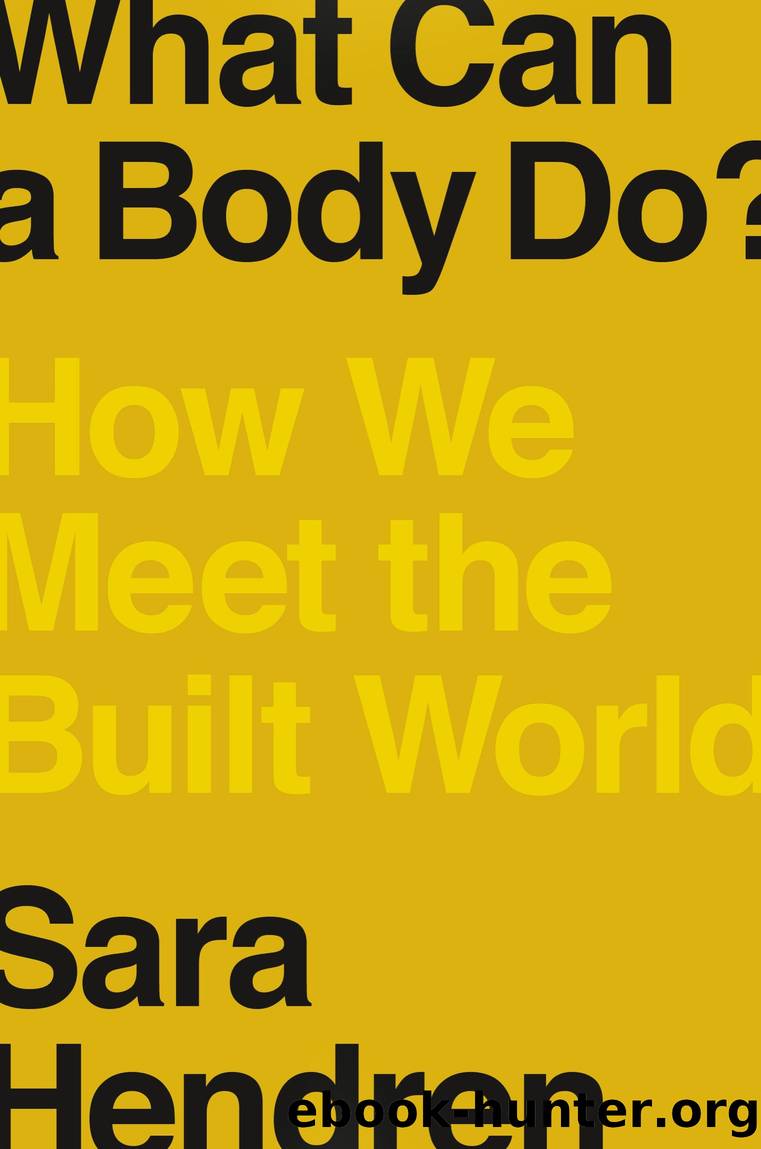What Can a Body Do? by Sara Hendren

Author:Sara Hendren [Hendren, Sara]
Language: eng
Format: epub
Publisher: Penguin Publishing Group
Published: 2020-08-18T00:00:00+00:00
—
For the last couple of years, I’ve been visiting Steve Saling in Chelsea, Massachusetts, who helped me see the long inheritance of the ILM in the home he designed for himself and two dozen others, a mix of technology and human care that he created to arrive in time for his body’s big changes. Steve got a diagnosis of amyotrophic lateral sclerosis (ALS) in his early forties. Now, more than a decade later, Steve lives with the ILM’s expanded idea of independence. But he also lives with something we all share: not just independence but the plain fact of dependence, too. In Steve’s life, I saw a constellation of designed gear and services that changed my perspective and my vocabulary about assistance—about human needfulness and its role in a desirable life.
From the lobby at the Leonard Florence Center for Living, there’s a set of extra-large elevators, the kind a full-size motorized chair can enter and exit, for taking visitors up to the residence floors. On the days Steve met me downstairs, he directed his chair’s movements by the padded switches that extend from the headrest to frame his temples; he moved his head very slightly to the left or right to make the commands. These motions, along with some muscle movement in his face, are the only mobility he has now. Steve always greeted me with a combination of his smile, his blinks and light nods, and his words—“It’s good to see you, Sara”—expressed in the voice of an automated text-to-speech device on his chair. He then summoned the elevator himself, taking us up to the third floor, where he lives in a series of rooms that look and feel like a home.
There’s a cheery yellow façade that frames the entrance at Saling House—an interior wall painted to look like the exterior of a suburban house, with real wood shutters around a “window” next to the entrance, a couple of potted plants, and a welcome sign that bears the house’s name. Two sets of oversize doors open to the interior, each pair sending one door swinging in and one swinging out for the widest possible berth. Steve and I crossed into a shared common area just inside the main entrance, where the furniture is like that of many living rooms in single-family homes. The chairs and furniture, the colors of the walls—all of these are choices that have been made to mimic the hues of nature: warm yellows and soft blues and greens. The decor, including a fireplace, framed artwork, and club chairs, follows the logic of what lots of people instinctively do when they furnish their own spaces: choosing lamps and furnishings whose simple curves mirror those of the body, the visual language that says Come and relax, not Beware the machines. The space is so homelike that you might miss the extraordinary sophistication of the technology that’s everywhere.
Now fifty-one, Steve is eleven years into his diagnosis. He has the boyish affect of someone much younger and the chin-length brown hair that he’s had all of his adult life.
Download
This site does not store any files on its server. We only index and link to content provided by other sites. Please contact the content providers to delete copyright contents if any and email us, we'll remove relevant links or contents immediately.
Sapiens: A Brief History of Humankind by Yuval Noah Harari(13054)
The Tidewater Tales by John Barth(12030)
Do No Harm Stories of Life, Death and Brain Surgery by Henry Marsh(6337)
Mastermind: How to Think Like Sherlock Holmes by Maria Konnikova(6236)
The Thirst by Nesbo Jo(5786)
Why We Sleep: Unlocking the Power of Sleep and Dreams by Matthew Walker(5644)
Sapiens by Yuval Noah Harari(4537)
Life 3.0: Being Human in the Age of Artificial Intelligence by Tegmark Max(4509)
The Longevity Diet by Valter Longo(4446)
The Rules Do Not Apply by Ariel Levy(3906)
The Immortal Life of Henrietta Lacks by Rebecca Skloot(3826)
The Body: A Guide for Occupants by Bill Bryson(3802)
Why We Sleep by Matthew Walker(3773)
Animal Frequency by Melissa Alvarez(3755)
Yoga Anatomy by Kaminoff Leslie(3702)
Barron's AP Biology by Goldberg M.S. Deborah T(3632)
The Hacking of the American Mind by Robert H. Lustig(3580)
All Creatures Great and Small by James Herriot(3517)
Yoga Anatomy by Leslie Kaminoff & Amy Matthews(3396)
